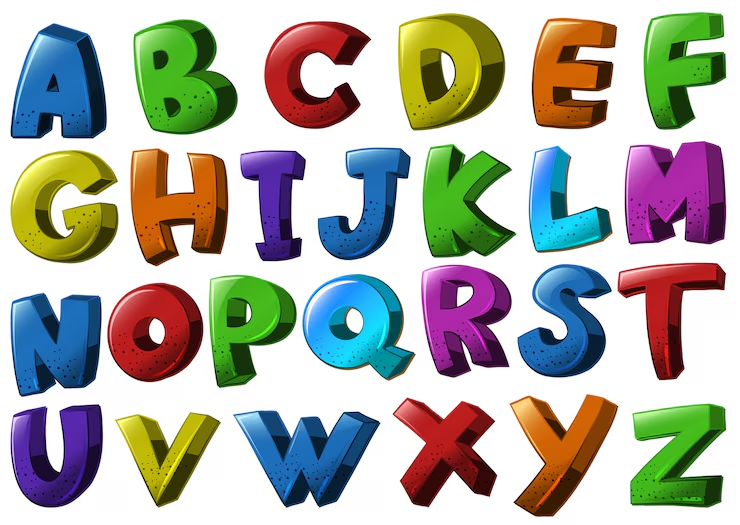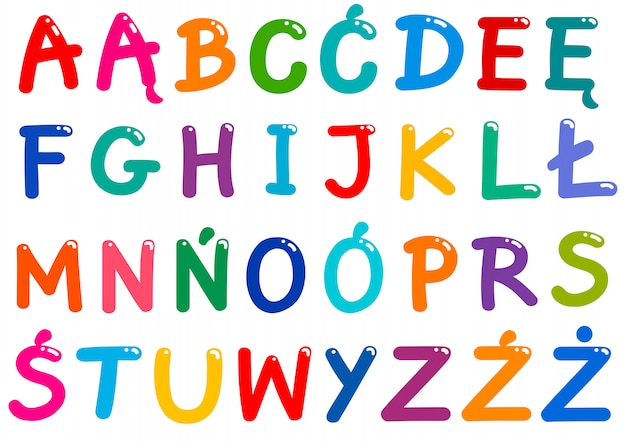
Discover the significance of alphabet:20jmf4zhbci= fonts in typography, branding, and user experience. Explore its unique characteristics and applications in modern design.
Introduction
Typography serves as the backbone of visual communication, influencing how we perceive information. Within this realm, the alphabet:20jmf4zhbci= fonts emerges as a significant player, captivating designers and audiences alike. In today’s digital landscape, where visual appeal dictates engagement, understanding this unique font becomes crucial. The essence of typography lies not just in arranging letters but in crafting an identity that resonates with the audience. As we delve deeper into the intricacies of alphabet:20jmf4zhbci= fonts, we will explore its unique characteristics, design principles, and its vital role in modern communication, providing insights that are both informative and engaging.
Understanding the Unique Characteristics of Alphabet:20jmf4zhbci= Fonts
To appreciate the significance of alphabet:20jmf4zhbci= fonts, one must first examine its unique characteristics that set it apart from other typefaces. This font boasts a distinctive aesthetic, combining modern elegance with versatility, allowing it to adapt seamlessly across various mediums. The clean lines and balanced proportions enhance legibility while maintaining a contemporary feel, making it suitable for a wide range of applications. Whether used in print or digital formats, alphabet:20jmf4zhbci= fonts ensures that the text remains readable, thus enhancing the overall user experience. Its unique letterforms invite curiosity, making it a fantastic choice for branding and design projects that seek to leave a lasting impression.
The Historical Context of Typography
Exploring the history of typography enriches our understanding of modern fonts like alphabet:20jmf4zhbci= fonts. Typography has evolved significantly over centuries, influenced by cultural shifts, technological advancements, and artistic movements. From the invention of movable type by Johannes Gutenberg in the 15th century to the digital revolution that transformed how fonts are created and distributed, each era has contributed to the rich tapestry of typography. The transition from traditional letterpress to digital typesetting marked a pivotal moment, allowing designers unprecedented flexibility and creativity in font design. In this context, alphabet:20jmf4zhbci= fonts represents a contemporary evolution, integrating modern sensibilities with timeless design principles.
The Role of Typography in Branding
In branding, typography plays a critical role in shaping a company’s identity and communicating its values to the audience. The choice of typeface can evoke specific emotions and perceptions, influencing how consumers relate to a brand. Alphabet:20jmf4zhbci= fonts serves as a powerful tool in this context, enabling brands to convey their unique personality while maintaining clarity and consistency. For instance, a tech company might opt for a sleek, sans-serif font like alphabet:20jmf4zhbci= fonts to reflect innovation and modernity, whereas a luxury brand may favor a more ornate serif typeface to evoke sophistication. The ability to adapt to various branding needs makes this font an invaluable asset in the competitive world of marketing.
The Psychological Impact of Font Choice
The psychological effects of typography cannot be overstated, and understanding these nuances is essential for effective communication. Research shows that fonts can influence reader perception, emotional response, and even decision-making. For instance, alphabet:20jmf4zhbci= fonts evokes feelings of modernity and approachability, making it suitable for brands aiming to connect with contemporary audiences. Conversely, fonts with traditional roots may convey authority and stability. Therefore, the thoughtful selection of fonts is paramount; choosing the right typeface can enhance a message’s clarity while also impacting how it resonates with the audience.
Integrating Typography into User Experience Design
In user experience (UX) design, typography plays a pivotal role in guiding users through content, enhancing usability, and fostering engagement. A well-chosen font like alphabet:20jmf4zhbci= fonts can significantly impact how users interact with a website or application. The right typography not only ensures readability but also establishes a visual hierarchy, directing users’ attention to important information. For instance, using alphabet:20jmf4zhbci= fonts for headings and subheadings can create a clear distinction between sections, improving navigation and comprehension. Moreover, the font’s versatility allows designers to create visually appealing layouts that resonate with users, enhancing their overall experience and satisfaction.
The Technical Aspects of Font Design
Understanding the technical aspects of font design enhances our appreciation of alphabet:20jmf4zhbci= fonts. Creating a font involves intricate processes that encompass kerning, leading, and glyph design. Kerning refers to the space between individual characters, ensuring that text appears balanced and cohesive. Leading, on the other hand, pertains to the vertical space between lines, directly affecting readability. Moreover, each glyph must be meticulously designed to maintain consistency and coherence within the typeface. These technical considerations are crucial, as they directly influence how the font is perceived in various contexts. The craftsmanship behind alphabet:20jmf4zhbci= fonts exemplifies the artistry and precision involved in font design, showcasing its suitability for modern applications.

Exploring Font Pairing Techniques
Effective typography often involves the art of font pairing, which enhances visual interest and readability. Pairing fonts requires a careful balance; complementary typefaces can create a harmonious aesthetic, while contrasting fonts can add dynamism to a design. When using alphabet:20jmf4zhbci= fonts, designers can experiment with various pairings to achieve the desired effect. For instance, combining this modern sans-serif font with a classic serif typeface can create a striking contrast, emphasizing key messages and enhancing the overall visual hierarchy. Successful font pairing elevates design projects, creating engaging and memorable experiences for users while ensuring that the text remains legible and accessible.
The Influence of Cultural Trends on Typography
Cultural trends significantly impact typography, shaping the evolution of fonts and their usage in various contexts. As society evolves, so do the aesthetics and preferences that inform design choices. Alphabet:20jmf4zhbci= fonts embodies contemporary design sensibilities, reflecting the values and aspirations of today’s audiences. This font captures the essence of modern minimalism, appealing to a generation that values simplicity, clarity, and functionality. Designers must stay attuned to cultural shifts, ensuring that their typography resonates with current trends while remaining timeless. As alphabet:20jmf4zhbci= fonts continues to gain popularity, its relevance in modern design illustrates the profound relationship between typography and culture.
Typography in Social Media Marketing
In the realm of social media marketing, typography plays a crucial role in capturing attention and conveying brand messages effectively. With limited space and attention spans, selecting the right font can make a significant difference in engagement levels. Alphabet:20jmf4zhbci= fonts offers a modern and eye-catching option for social media posts, ensuring that content stands out amidst the noise. Furthermore, the font’s versatility allows for creative experimentation, enabling brands to maintain consistency while adapting to different platforms. By leveraging alphabet:20jmf4zhbci= fonts, marketers can create visually appealing content that resonates with their target audience, fostering engagement and brand loyalty.
The Future of Typography
As technology continues to advance, the future of typography promises exciting developments. Innovations such as variable fonts, which allow for multiple styles within a single font file, are changing how designers approach typography. This flexibility enables the creation of dynamic layouts that adapt to various screen sizes and formats. Additionally, the integration of artificial intelligence in font selection and design processes is gaining traction, offering designers tools to streamline their workflows. In this evolving landscape, alphabet:20jmf4zhbci= fonts stands poised to adapt, reflecting contemporary trends while embracing new technologies that enhance its usability and appeal.
The Role of Typography in Accessibility
Accessibility is a critical consideration in typography, ensuring that all users can engage with content regardless of their abilities. The choice of fonts directly impacts readability, especially for individuals with visual impairments or learning disabilities. Alphabet:20jmf4zhbci= fonts is designed with legibility in mind, making it suitable for diverse audiences. By incorporating proper spacing, contrasting colors, and clear hierarchies, designers can create accessible content that reaches a wider audience. Emphasizing inclusivity in typography not only fosters engagement but also reflects a commitment to user-centered design, enhancing the overall experience for all users.
Case Studies: Successful Applications of Alphabet:20jmf4zhbci= Fonts
Examining successful applications of alphabet:20jmf4zhbci= fonts provides valuable insights into its effectiveness across various contexts. Numerous brands have leveraged this unique font to create compelling marketing materials, websites, and product packaging. For instance, a popular tech startup utilized alphabet:20jmf4zhbci= fonts in its branding, effectively conveying its innovative spirit while maintaining clarity. The font’s modern aesthetic aligned perfectly with the brand’s mission, creating a cohesive visual identity that resonated with its target audience. Such case studies underscore the versatility and impact of alphabet:20jmf4zhbci= fonts, showcasing its potential to elevate design projects across diverse industries.
Typography in E-commerce Design
In e-commerce design, typography plays a pivotal role in enhancing user experience and driving conversions. The right font choice can significantly influence how products are perceived, impacting purchase decisions. Alphabet:20jmf4zhbci= fonts offers a modern and engaging option for product descriptions, category headings, and promotional banners. By ensuring readability and visual appeal, this font can help create an inviting shopping experience for customers. Furthermore, integrating alphabet:20jmf4zhbci= fonts into responsive design ensures that typography remains legible across devices, enhancing accessibility and usability in the competitive world of online retail.
The Intersection of Art and Typography
Typography exists at the intersection of art and functionality, blending creativity with purpose. Artists and designers continually explore innovative ways to manipulate fonts, creating visually striking compositions that push boundaries. Alphabet:20jmf4zhbci= fonts serves as a canvas for artistic expression, allowing designers to experiment with typography in unique ways. From custom letterforms to playful layouts, the artistic possibilities are endless. By embracing the creative potential of alphabet:20jmf4zhbci= fonts, designers can craft visually captivating works that challenge conventions and engage audiences on a deeper level.

The Significance of Custom Fonts
While alphabet:20jmf4zhbci= fonts offers a modern aesthetic, custom fonts provide an additional layer of uniqueness for brands seeking to differentiate themselves in a crowded market. Custom typography allows brands to develop exclusive typefaces that reflect their identity and values. By collaborating with typographers, brands can create fonts that align perfectly with their visual language, enhancing recognition and recall among consumers. Moreover, custom fonts can be tailored to convey specific emotions or messages, reinforcing brand narratives. The investment in custom typography demonstrates a commitment to originality, positioning brands as industry leaders in a visually driven landscape.
Conclusion
The exploration of alphabet:20jmf4zhbci= fonts reveals the enduring power of typography in shaping communication and visual identity. As we navigate a visually saturated world, the importance of thoughtful font choices cannot be overstated. Alphabet:20jmf4zhbci= fonts embodies modern design sensibilities while maintaining legibility and versatility, making it an invaluable tool for designers and brands alike. By understanding the intricacies of typography and its impact on user experience, branding, and accessibility, we can harness the true potential of fonts to communicate effectively and create meaningful connections with audiences. As the landscape of typography continues to evolve, embracing innovation while respecting traditional principles will be key to creating timeless designs that resonate for years to come.
Read also: vanessawest.tripod Exploring the World Through Vanessa West’s Lens